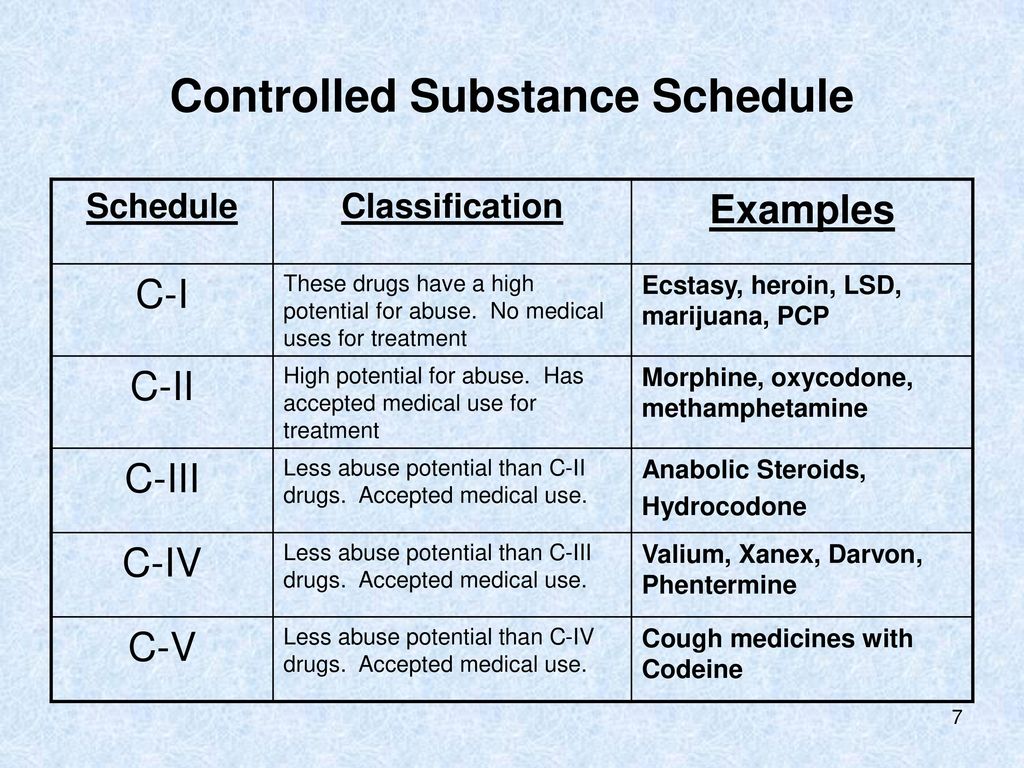Classification of Drugs: Understanding Drug Schedule 1-5
When it comes to understanding how drugs are regulated, knowing how they’re classified is key. In the world of pharmacology, drugs aren’t all treated equally —they’re divided into schedules based on factors like their medical use, potential for abuse, and risk of dependency.
These drug schedules (ranging from Schedule I to Schedule V) help shape how substances are prescribed, dispensed, and monitored. From the most tightly controlled to the least, each category plays an important role in balancing access to medications with public safety.
In this article, we’ll break down each drug schedule—what it means, which drugs fall into each category, and why these classifications matter. Whether you’re a student, healthcare professional, or just curious, understanding drug schedules can shed light on how our healthcare and legal systems manage controlled substances. Let’s dive in!

Schedule 1 Drugs
Schedule 1 drugs are classified as substances with a high potential for abuse and no recognized medical use. These drugs are strictly regulated and illegal in most jurisdictions. Examples of Schedule 1 drugs include heroin, LSD, and ecstasy (MDMA). Due to their addictive properties and severe health risks, these substances are strictly prohibited and subject to stringent legal penalties.
Note: It is important to acknowledge that, while marijuana is classified as a Schedule 1 drug at the federal level in the United States, its legal status varies at the state level. Several states have legalized marijuana for medical and/or recreational use, which may create variations in its legal status and accessibility across different jurisdictions. It is essential to consult local laws and regulations regarding marijuana use and distribution in specific regions.
Schedule 2 Drugs
Schedule 2 drugs possess a high potential for abuse but have accepted medical uses. They are subject to strict regulations, including limitations on prescriptions and dispensing. Substances in this schedule include powerful opioids such as oxycodone, morphine, and fentanyl, as well as stimulants like amphetamines. Due to their potential for addiction and misuse, these drugs are highly controlled and require careful monitoring and oversight.

Schedule 3 Drugs
Schedule 3 drugs have a moderate potential for abuse but still possess accepted medical uses. Schedule 3 drugs require a prescription for legal acquisition, but the regulations governing them are relatively less stringent compared to those for Schedule 2 drugs. Examples of Schedule 3 substances include certain opioids with lower abuse potential, such as codeine preparations, as well as some anabolic steroids. These medications are subject to prescribing restrictions and monitoring to prevent abuse and ensure patient safety.
Schedule 4 Drugs
Schedule 4 drugs, also known as prescription-only medicines, have a moderate potential for abuse but hold significant therapeutic value. These drugs require a prescription from a healthcare professional for lawful acquisition and use. Schedule 4 substances include medications such as benzodiazepines (e.g., diazepam), certain opioids like tramadol, and sleep aids like zolpidem. While they have recognized medical uses, their potential for abuse necessitates regulation and controlled distribution.
Schedule 5 Drugs
Schedule 5 drugs are classified as medications with a low potential for abuse or dependence. They have accepted medical uses and can be purchased without a prescription, albeit with some regulations in place. Schedule 5 substances have the lowest potential for abuse among controlled substances and are commonly used to treat mild conditions. Examples include medications containing low-dose codeine, diphenoxylate/atropine combinations, and certain antidiarrheal agents. While relatively safe, these drugs still require responsible use and adherence to recommended dosages.
Other Schedules
In addition to the schedules mentioned above, some countries or regions may have further classifications for controlled substances. These schedules are often jurisdiction-specific and aim to regulate substances based on their properties, potential for abuse, and medical uses. These additional schedules, such as Schedule 6 and higher, provide further categorization and legal frameworks specific to particular regions.
Conclusion
Proper classification of drugs into different schedules provides a fundamental framework for regulating controlled substances based on their properties, potential for abuse, and medical uses. Understanding the distinctions between Schedule 1, Schedule 2, Schedule 3, Schedule 4, and Schedule 5 drugs is crucial for healthcare professionals, law enforcement agencies, policymakers, and individuals involved in the field of pharmacology


Prescription medication management is one of our valuable services at Overland IOP, a mental health and addiction treatment center. This service recognizes the significance of adhering to the appropriate drug schedules while ensuring the safe and responsible use of medications. By offering comprehensive treatment plans that encompass pharmacological interventions, Overland IOP aims to optimize patient care and promote long-term recovery. The classification of drugs by schedule serves as an important tool in promoting patient safety, preventing substance abuse, and facilitating appropriate access to medications. Through responsible prescribing practices, monitoring, and education, we can harness the power of pharmacology to improve lives and support individuals on their journey toward health and well-being.
Published: July 14, 2023
Last Updated: July 09, 2025

Published: June 30, 2025
ABA Therapy Controversy: What Families Should Know in 2025
Autism prevalence has climbed to 1 in 36 U.S. children, and payers now reimburse up to 40 hours a week of Applied Behavior Analysis (ABA)—still the only intervention every state is required to cover. Despite the praise from pediatric associations, many autistic adults describe the same therapy as traumatic. Parents must navigate a maze of […]
Read more
Published: June 06, 2025
Ozempic and Alcohol: What You Should Know
Moderate alcohol use is generally permissible while on Demaglutide (Ozempic®/Wegovy®) or Tirzepatide (Mounjaro®, Zepbound®), though extra caution is wise due to blood-sugar variability and compounded GI side-effects. As for craving control, semaglutide—and potentially tirzepatide—shows promising but preliminary evidence of reducing alcohol consumption. Larger Phase III trials are under way, and FDA approval would be the […]
Read more
Published: May 23, 2025
Intensive Outpatient Program Duration
Intensive Outpatient Programs (IOPs) bridge the gap between full-time residential care and traditional outpatient services. Designed for individuals who require more structured support than weekly therapy but do not need 24-hour supervision, IOPs offer flexibility—letting clients continue to work, attend school, or care for family while engaging in an intensive treatment schedule. Overland IOP in […]
Read more
